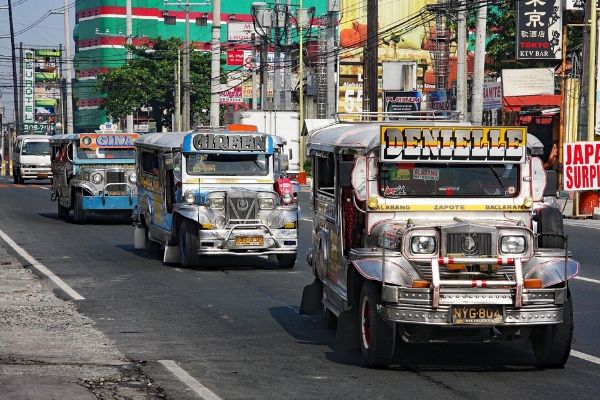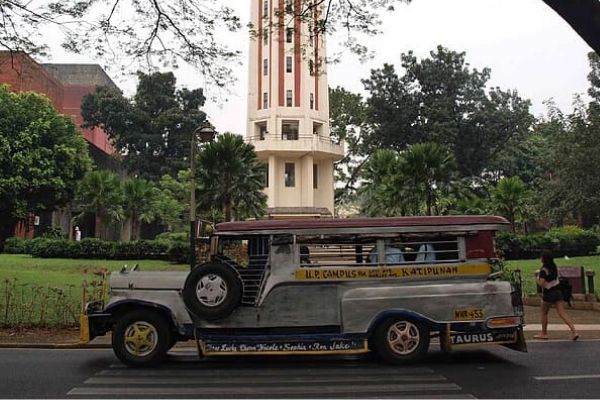They’ve been alternately called a symbol of Filipino culture and a bane on modern roads. The length of their bodies is determined not by size, but by the number of passengers that can sit on either bench lining the interior.
They’ve been referred to as crude, unrefined, entertaining, colorful, or a combination of these at one point or another.

Jeepneys have been an indelible part of Philippine motoring
Such is the character of the jeepney, that persistent mainstay of the Philippine driving experience. The volume of jeepneys plying their routes anywhere in the Philippines once earned them the moniker “King of the Road”, but increasingly stringent emissions and safety standards have made those days forever part of a bygone era.
It started life as the “auto calesa” or AC, an Austin 7 modified to serve as a motor coach ferrying eight to ten passengers. A number of Austin 7s were shipped to the country at the onset of World War II, likely to serve as public transport.

Hard to believe that the hefty jeepney started out as this scrawny thing
>>> Related: The Future of Jeepneys in the Philippines: Why it needs an upgrade
After the war, a new, sturdier platform was found. Hundreds of military Jeeps were left behind by American forces as the war ended, and these were turned over to Filipino hands.
Seeing how much of the public transport infrastructure has been obliterated by efforts to liberate the country, enterprising locals saw an opportunity to upcycle the surplus Jeeps.

Hundreds of these war horses were left behind for ingenious Filipinos to repurpose
They stripped the vehicles down and added metal roofs and long parallel benches along the length of the body. To keep everyone’s spirits up in the face of the country’s uncertainty, the new vehicle was decked out in bright colors.
Completing the transformation was the coining of a new name: jeepney, taken from the donor vehicle (Jeep) and the jitney, a colloquial American slang for a metered taxi.
Soon, the streets were littered with this newfangled mode of transport. Jeepneys are typically assigned specific routes, usually spelled out along the vehicle’s running boards to make it easier for passengers going to a particular destination.

A new form of mass transport emerged after the war
The popularity stemmed from the jeepney’s open-door design, making ingress and egress easy. The windshield is almost always the only area that used glass, which meant that air freely circulated around the interior especially when the jeepney was at speed.
Furthermore, the jeepney was a ready canvas with which to express typical Filipino creativity - from the iconic spring-mounted rocking horses on the hood, elaborate artwork on the sides of the body, to mud flaps that carried humorous catchphrases and truisms.

There's bound to be a jeepney going to wherever you're headed
>>> Related: PUJ modernization not a program against jeepneys
Whereas the early jeepneys ran on gasoline engines, subsequent modifications to the vehicle made diesel the standard power plant. These were frequently sourced from used light trucks, with the engines refurbished and repurposed for passenger use.
Longer six-wheeled jeepneys to ferry more passengers or cargo are not unheard of, especially in the countryside. Loud onboard sound systems would also become the norm, necessitating a signaling system where passengers pull a string or push a button, to alert the driver that they intend to get off.

The jeepney fought to keep its turf even as mass transport evolved
The 1970s and 1980s were considered the golden age of the jeepney, with one local fabricator churning out as much as 300 units a year.
Nowadays many local industries dedicated to assembling jeepneys have closed down, victims of the very progress in mobility that the jeepney initially represented.

Is this Philippine icon on its way to becoming a museum piece?
The remaining units on the road face extinction, with a modernization program seeking to replace these iconic but unsafe (from an engineering standpoint) vehicles.
Contemporary features such as free onboard wi-fi and closed circuit television (CCTV) cameras are being offered, at the expense of reduced passenger capacity.
Will the jeepney find another route to ply as it did in the aftermath of the war, or has the time come for its last ride home? Check out more motoring history at Philkotse.com.
Recent posts
- Philippine made cars Mar 18, 2021
- Updates on the proposed Jeepney Modernization plan Oct 10, 2019
- Tips to avoid getting in an argument with a Jeepney driver Jun 17, 2019
- PUVMP news: Isuzu Philippines is offering modernized Jeepneys Dec 01, 2020
- 6 most common issues Filipinos have with Jeepneys Mar 14, 2019












